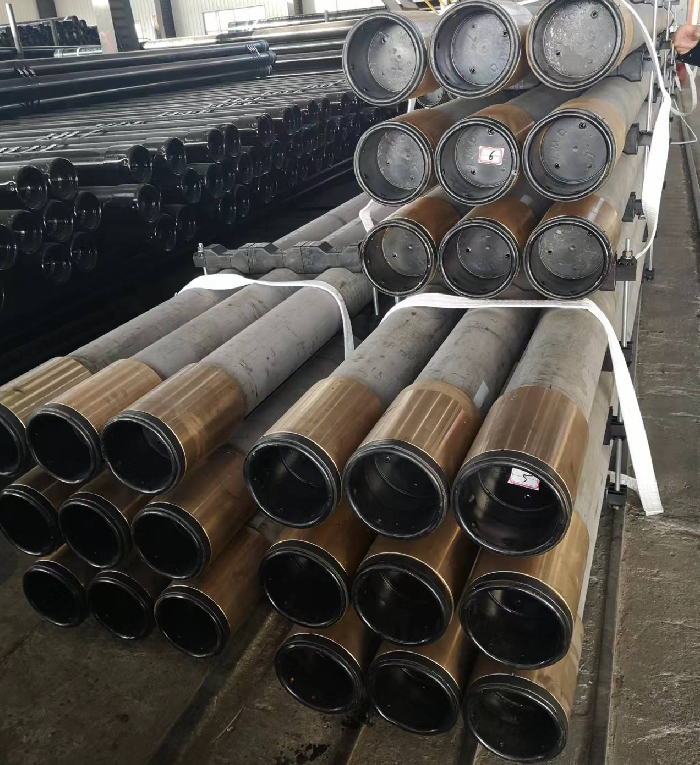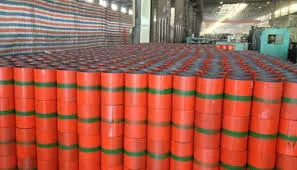2 月 . 15, 2025 02:45
Back to list
what is the difference between casing and tubing?
In the realm of the oil and gas industry, understanding the distinct roles of casing and tubing is crucial for enhancing operational efficiency and safety. Both are fundamental components of the drilling process, yet they serve unique purposes that are vital for the optimal functioning of wells.
1. Production tubing - This is used to extract oil and gas from the earth. 2. Injection tubing - Employed in secondary recovery methods such as gas lift or water flood to enhance production. 3. Coiled tubing - Flexible and continuous, it’s often used for well intervention and maintenance without stopping production. Expertise in selecting the appropriate casing and tubing involves a detailed understanding of factors such as cost, pressure, chemical compatibility, and environmental conditions. For instance, in corrosive environments, selecting the right material for casing and tubing is essential to prevent damage that could lead to loss of well integrity. Knowledgeable engineers and operators often reference standards provided by authoritative bodies like the American Petroleum Institute (API), ensuring they meet the industry benchmarks for safety and performance. In terms of the detailed process, after drilling each subsection of a well, casing is lowered into the wellbore and cement is pumped in to fill the gap between the casing and the borehole walls. This cementing process secures the casing in place and prevents any unwanted migration of fluids. Conversely, tubing does not require cementing. It is suspended from the wellhead and operates within the production casing. This allows easy replacement through workover processes if the tubing becomes worn or fouled over time. When considering the expertise involved in casing and tubing operations, it’s crucial to consider the environmental aspects and regulatory compliance. Numerous wells are drilled in diverse locations, each with unique geologic and environmental challenges. Therefore, an understanding of local geological conditions and conforming to legal requirements is essential for sustainability and societal trust. Ultimately, the distinction between casing and tubing lies in their roles—casing provides structural support and environmental protection during drilling, while tubing is integral to the extraction process of hydrocarbons. Mastery of these components is pivotal within the oil and gas sector, enabling companies to optimize their production, adhere to environmental protocols, and ensure safety in their drilling operations.


1. Production tubing - This is used to extract oil and gas from the earth. 2. Injection tubing - Employed in secondary recovery methods such as gas lift or water flood to enhance production. 3. Coiled tubing - Flexible and continuous, it’s often used for well intervention and maintenance without stopping production. Expertise in selecting the appropriate casing and tubing involves a detailed understanding of factors such as cost, pressure, chemical compatibility, and environmental conditions. For instance, in corrosive environments, selecting the right material for casing and tubing is essential to prevent damage that could lead to loss of well integrity. Knowledgeable engineers and operators often reference standards provided by authoritative bodies like the American Petroleum Institute (API), ensuring they meet the industry benchmarks for safety and performance. In terms of the detailed process, after drilling each subsection of a well, casing is lowered into the wellbore and cement is pumped in to fill the gap between the casing and the borehole walls. This cementing process secures the casing in place and prevents any unwanted migration of fluids. Conversely, tubing does not require cementing. It is suspended from the wellhead and operates within the production casing. This allows easy replacement through workover processes if the tubing becomes worn or fouled over time. When considering the expertise involved in casing and tubing operations, it’s crucial to consider the environmental aspects and regulatory compliance. Numerous wells are drilled in diverse locations, each with unique geologic and environmental challenges. Therefore, an understanding of local geological conditions and conforming to legal requirements is essential for sustainability and societal trust. Ultimately, the distinction between casing and tubing lies in their roles—casing provides structural support and environmental protection during drilling, while tubing is integral to the extraction process of hydrocarbons. Mastery of these components is pivotal within the oil and gas sector, enabling companies to optimize their production, adhere to environmental protocols, and ensure safety in their drilling operations.
Latest news
-
Unlock the Benefits of Pup Joints for Your OperationsNewsOct.31,2024
-
The Quality of Casing Couplings from ChinaNewsOct.31,2024
-
The Essential Role of Pup Joints in Drilling OperationsNewsOct.31,2024
-
The Benefits of Tubing Couplings for Your ProjectsNewsOct.31,2024
-
Enhance Your Drilling Operations with Tubing Pup JointsNewsOct.31,2024
-
Elevate Your Drilling Operations with Tubing CrossoversNewsOct.31,2024
Related Products







